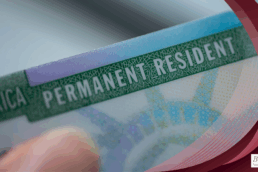
In November of 2016, the Department of Homeland Security released the final text of the rule seeking to improve certain aspects of the employment-based immigration system. The new rule seeks to implement certain changes to the nonimmigrant and immigrant visas in order to better allow U.S. employers to retain foreign workers. This rule also provides increased flexibility to foreign workers, particularly those from India and China, during their U.S. employment-based immigration process. The final rule goes into effect on January 17, 2017.
A significant portion of the final rule deals with codifying existing USCIS practice, based on agency guidance and memoranda, into the regulations. In other words, a good portion of this final rule does not bring about much substantive change. Below we take a look at some of the new or changed provisions.
Summary of the Proposed Rule
Portability of I-140s and Priority Dates
I-140 petitions which have been approved for more than 180 days will be valid for H-1B extensions beyond the sixth-year limit and valid for portability (including retention and porting of the priority date) even in the event the sponsoring employer withdraws the approved I-140 or goes out of business. Withdrawal by USCIS due to fraud, misrepresentation, or material error voids the portability.
I-140 EAD for “Compelling” Reasons
The proposed rule seeks to create a new category of EAD available to workers maintaining E-3, H-1B, H-1B1, L-1, or O-1 status, who have an approved I-140 in the EB1, EB2, or EB3, categories, and who are unable to adjust status because of retrogressed visa cutoff date. The I-140 EAD will be available only for “compelling” reasons and there are restrictions on status and renewals.
Introduction of Grace Period after Employment Termination
The proposed rule seeks to allow a one-time grace period of 60 days after termination of H-1B employment (prior to expiration of authorized stay) to allow H-1B workers and their dependents time to seek H-1B transfer, change of status, or departure from the U.S. This grace period would also apply to workers holding E-1, E-2, E-3, H-1B1, L-1, O-1, and TN status and their dependents
Automatic Employment Authorization During EAD Extensions
The proposed rule seeks to allow for automatic and continued employment authorization for up to 180 days for certain types of employment authorization document (EAD) renewals when the EAD renewal application is timely-filed and remains pending after the current EAD term’s expiration. Only certain types of EADs are included, I-485 EADs are included while H-4 EADs are not.
If you have questions on how this final rule may affect your U.S. immigration status or if you have other questions about it, please contact our office to schedule a consultation with one of our attorneys today!
Related Posts
October 7, 2025
DHS Plans Major Updates to Employment-Based Green Card Rules
September 25, 2025
What Is the Trump Gold Card? Requirements and Details
Ready to have Berardi on your side?
Whether you’re a business looking to hire or a professional hoping to relocate, immigration law can be complicated. But you don’t have to do it alone. Put our experience to work for you.


